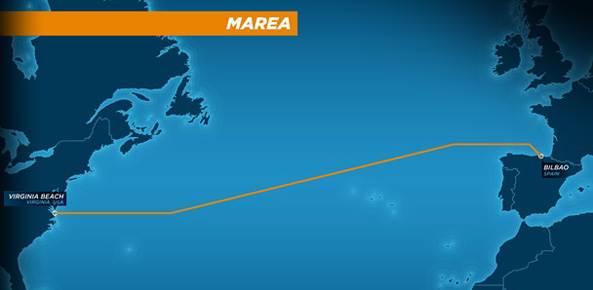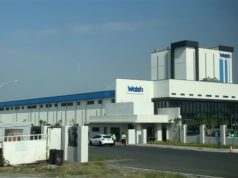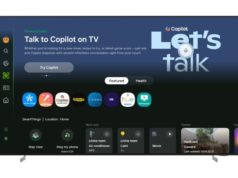Beginning in August, Facebook and Microsoft are launching a 14-month-long project to lay 6,600 kilometers (4,100 miles) of high-speed cable across the Atlantic, from Virginia Beach to Bilbao, Spain.
The companies said the system — designed to support the fast-growing demand for cloud and online services — will be the highest-capacity subsea cable ever across that span. Composed of eight fiber pairs, the cable will have an initial estimated data-carrying capacity of 160 terabytes per second (a terabyte is one trillion bytes, enough to store around 500 hours’ worth of movies).
Facebook and Microsoft are naming the cable project “Marea,” which means “tide” in Spanish. The first such cable connecting the U.S. with southern Europe, it will also help ensure resilience for existing transatlantic connections located farther north, according to the companies.
8.6 ZB of Cloud Traffic by 2019
Rapidly growing demand for online services, especially cloud-based services, is driving demand for more data transmission capabilities. Microsoft, for example, said it offers more than 200 cloud services, including Microsoft Azure, Skype and Office 365. Facebook, meanwhile, supports social networking services for more than 1 billion active users every day.
Annual global data center IP traffic is expected to reach 10.4 zettabytes — a zettabyte is 1 billion terabytes — by the end of 2019, according to the most recent cloud predictions from Cisco. Traffic for cloud services alone is projected to hit 8.6 zettabytes a year by then, up from 2.1 zettabytes annually in 2014.
Set to be completed by October 2017, the Marea cable project will be operated by Telxius, a new global company created by the Spanish telecommunications firm Telefónica in February. In addition to managing the system, Telxius will also sell capacity on the cable to other customers across the U.S., Europe and elsewhere.
‘Open’ Design for Faster Bandwidth Growth
Microsoft has already undertaken similar transoceanic cable projects, and last year announced it had signed on as a first foundation customer for AEConnect, a new transatlantic cable from New York to Ireland that began operating early this year.
In a blog post announcing that project in May 2015, Microsoft’s managing director of network enablement David Crowley noted that high-capacity cable was in short supply globally. “Out of approximately 230 subsea cables across the globe, very few are currently equipped to fully support coherent technology with 100 Gbps capabilities,” he said.
Projects like Marea are needed to “support ever faster and even more resilient connections to our cloud services,” Frank Rey, who heads up Microsoft’s global network acquisition group for cloud services, wrote in a blog post today. Rey added that Microsoft and Facebook designed Marea to be interoperable with a variety of networking equipment.
“This new ‘open’ design brings significant benefits for customers: lower costs and easier equipment upgrades which leads to faster growth in bandwidth rates since the system can evolve at the pace of optical technology innovation,” Rey said. “This is critical to ensure the Microsoft Cloud continuously improves to provide the highest availability and performance our customers need for their mission-critical workloads and data.”







